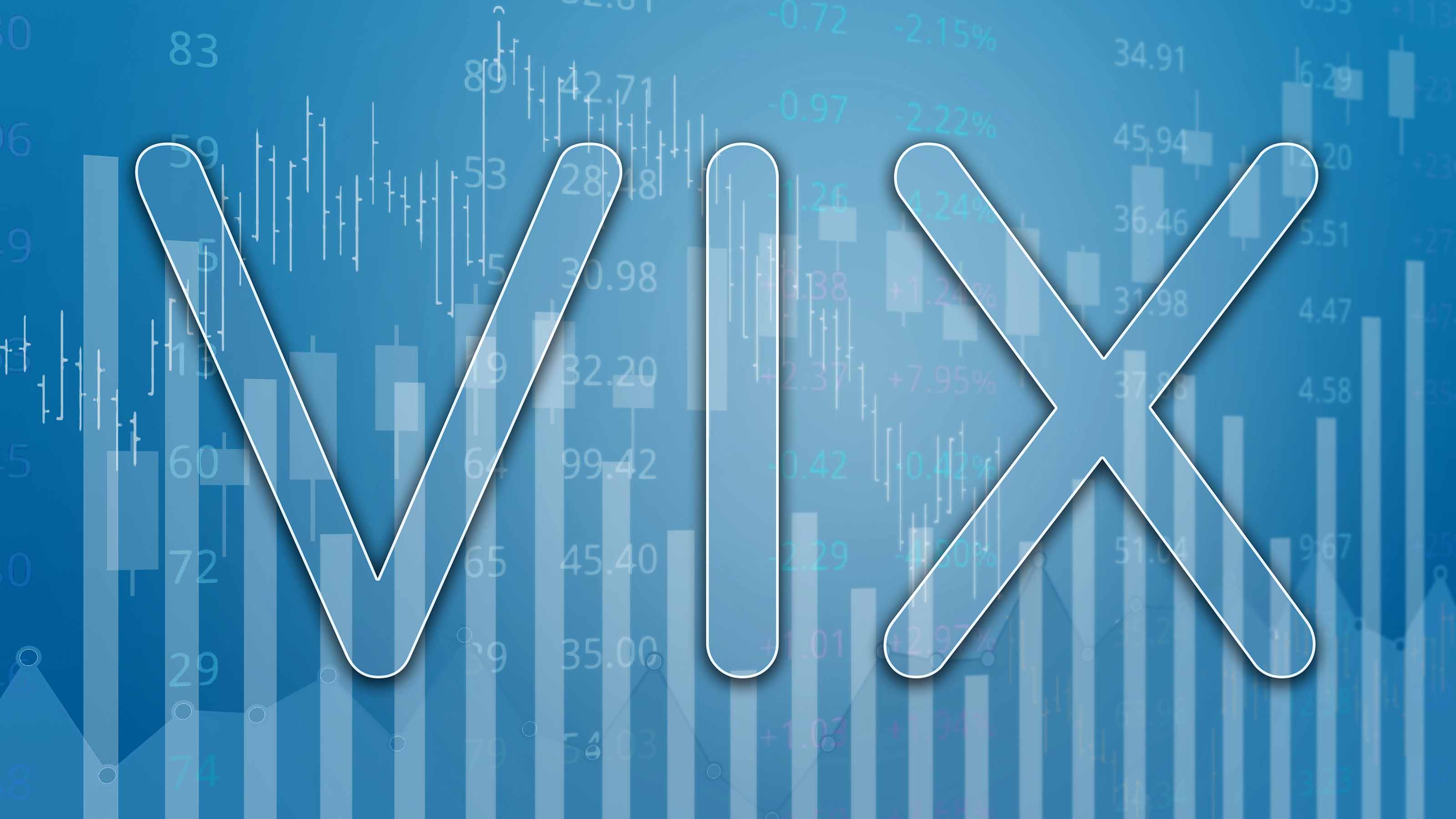What Is the VIX? This 'Fear Index' Is Used for Active Investing
The VIX is typically used to measure short-term investor sentiment, but many also use the index as a foundation for active investing strategies.


The Cboe Volatility Index – frequently referred to by its ticker symbol, "the VIX" — is a real-time measure of implied volatility on the benchmark S&P 500 Index (SPX). Not only is the VIX used as a quick gauge of short-term investor sentiment, it's also the basis of many active investing strategies, from portfolio hedging to directional speculation.
First introduced by the Chicago Board Options Exchange (Cboe) in 1993, the initial version of the VIX reflected a rolling 30-day calculation of at-the-money implied volatility (IV) on S&P 100 Index (OEX) options. This calculation is no longer widely used or tracked, but the "old VIX" is still available under the ticker symbol VXO.
The current version of the VIX, which has been in popular use since 2003, offers a more comprehensive look at options IV by considering a range of near-the-money call and put strikes on the broader S&P 500.
From just $107.88 $24.99 for Kiplinger Personal Finance
Become a smarter, better informed investor. Subscribe from just $107.88 $24.99, plus get up to 4 Special Issues

Sign up for Kiplinger’s Free Newsletters
Profit and prosper with the best of expert advice on investing, taxes, retirement, personal finance and more - straight to your e-mail.
Profit and prosper with the best of expert advice - straight to your e-mail.
Specifically, intraday VIX quotes are calculated from a basket of short-term SPX options that are weighted to maintain a constant average maturity of 30 days.
What does the VIX tell us?
Generally speaking, implied volatility is expected to rise during times of heightened fear or uncertainty regarding the short-term direction of the market, whereas lower IV is correlated with investor complacency and positive price action for equities.
Since the VIX is a fairly straightforward measure of implied volatility on one of the most widely tracked U.S. equity benchmarks, a relatively higher VIX is said to indicate elevated fear among investors, while a relatively lower VIX suggests greater calm among market participants.
As such, many analysts and market watchers track the VIX as a contemporaneous indicator of investor sentiment, and it's often referred to casually as the "fear gauge."
How can I trade the VIX?
The real-time VIX values quoted in the financial media (aka the "spot" or "cash" VIX) should be regarded as statistics. The reality is the VIX has no publicly listed shares and cannot be traded directly in the same way as a company's stock.
That said, there are plenty of VIX derivatives and VIX-linked exchange-traded products available for those looking to add long or short volatility exposure to their portfolios.
Given the differing factors driving the day-to-day action in each index, the VIX and the SPX are generally expected to maintain an inverse correlation with one another. This historical relationship, alongside the well-publicized VIX highs that accompanied stock market crashes in 2008 and 2020, has driven investor interest in long VIX exposure as a "hedge" of sorts to offset a portfolio that's top-heavy on large-cap equities.
The Cboe lists options contracts that derive their value from short-term VIX futures, and call options on VIX can be used to hedge equity portfolios in the expectation that VIX and stocks will continue to diverge over time. VIX calls and puts can also be used to bet on directional moves in the index itself, though traders should be aware of the unique expiry and settlement rules pertaining to VIX options.
In addition to VIX options, various VIX-based exchange-traded products (ETPs) exist that track the price action of the index itself and/or some combination of its futures — whether directly, inversely or in a leveraged manner. Some of the more popular and active of these include the iPath Series B S&P 500 VIX Short Term Futures ETN (VXX), the ProShares Ultra VIX Short-Term Futures ETF (UVXY) and the Short VIX Short-Term Futures ETF (SVXY).
That said, many VIX-based products may be suboptimal for the goals of casual investors due to structural concerns with the roll of underlying futures contracts, increased risk associated with leveraged and inverse ETPs, and more.
As with any investing vehicles, traders should carefully consider the stated goals, suggested holding periods and liquidity of these instruments.
Related content
- Making the Case for Covered Call Strategies
- Bull Markets vs Bear Markets: The Differences Explained
- The Investment Strategy You Need Now
Profit and prosper with the best of Kiplinger's advice on investing, taxes, retirement, personal finance and much more. Delivered daily. Enter your email in the box and click Sign Me Up.

Elizabeth Volk has been writing about the stock and options markets since 2007. Her analysis has been featured on CNBC, published in Forbes and SFO Magazine, syndicated to Yahoo Finance and MSN, and quoted in Barron's, The Wall Street Journal, and USA Today.
-
 Dow Hits New High Then Falls 466 Points: Stock Market Today
Dow Hits New High Then Falls 466 Points: Stock Market TodayThe Nasdaq Composite, with a little help from tech's friends, rises to within 300 points of its own new all-time high.
-
 The Best Vanguard Bond Funds to Buy
The Best Vanguard Bond Funds to BuyInvestors seeking the best Vanguard bond funds can pick between mutual funds and ETFs spanning maturities, credit qualities, tax treatment and geographies.
-
 Are You Afraid of an IRS Audit? 8 Ways to Beat Tax Audit Anxiety
Are You Afraid of an IRS Audit? 8 Ways to Beat Tax Audit AnxietyTax Season Tax audit anxiety is like a wild beast. Here’s how you can help tame it.
-
 For Stocks, the Midterms May Not Matter. Here's Why That's A Good Thing.
For Stocks, the Midterms May Not Matter. Here's Why That's A Good Thing.The good news is, no matter who wins control of Congress, stocks typically enjoy a nice gain.
-
 Stock Market Today: Dow Sinks 981 Points in Wide Market Washout
Stock Market Today: Dow Sinks 981 Points in Wide Market WashoutStock Market Today Powell's rate-hike remarks continued to plague equities Friday as the major indexes suffered their worst single-day losses since early March
-
 Stock Market Today: Stocks Scratch Out Meager Gains
Stock Market Today: Stocks Scratch Out Meager GainsStock Market Today Lowest jobless claims number since 1968 gives the major indexes just enough oomph to avoid a third straight session in the red.
-
 Stock Market Today: Dow Dashes to Best Gain Since November 2020
Stock Market Today: Dow Dashes to Best Gain Since November 2020Stock Market Today Russia reportedly is opening the door to negotiations, sparking a broad-based rally Friday that saw all 11 sectors finish well in the green.
-
 Stock Market Today: Markets Turn Tail as Ukraine Invasion Risk Rises
Stock Market Today: Markets Turn Tail as Ukraine Invasion Risk RisesStock Market Today Warnings that Russia is heading toward an 'imminent invasion' of Ukraine sent investors back toward the exits Thursday.